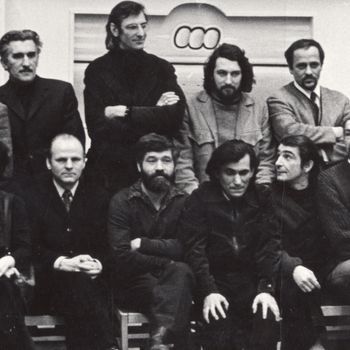The Non-Conformists
“To tell you the truth, it was financially difficult to follow three fields: avant-garde, icons and young artists. In the 1950s, there was a relatively small group: 10-12 people - very talented artists: Rabin, Krasnopevtsev, Plavinsky, Weisberg and some others. For a number of years, every year I bought one or two pieces from each of them. Many artists gave me their works. This is how the collection was formed. " (from the memoirs of George Costakis).
According to Costakis, he did not intend to collect works of contemporary artists. However, the collection evolved by itself. It is important to note that Costakis supported exclusively unofficial, underground masters, considering them to be the successors of the avant-garde line. There was a mutual attraction here: young artists were intuitively drawn to the owner of the avant-garde collection. And he felt his involvement in everything new, vivid, and contemporary.
Therefore, since the mid-1950s, George Costakis has become a frequent visitor of artistic communities (Lianozovo group), workshops and apartment exhibitions. Among the group of nonconformists, the collector singled out Anatoly Zverev, whose works in the 1950s and 1960s he collected passionately and purposefully, as well as Dmitry Krasnopevtsev, with whom he carried his friendship throughout his life. According to Oscar Rabin, Costakis often acted as a kind of curator of artists, guiding them on the path of abstraction. Some, (like Zverev) took a chance and created cycles that echo the forms of the Russian avant-garde.
